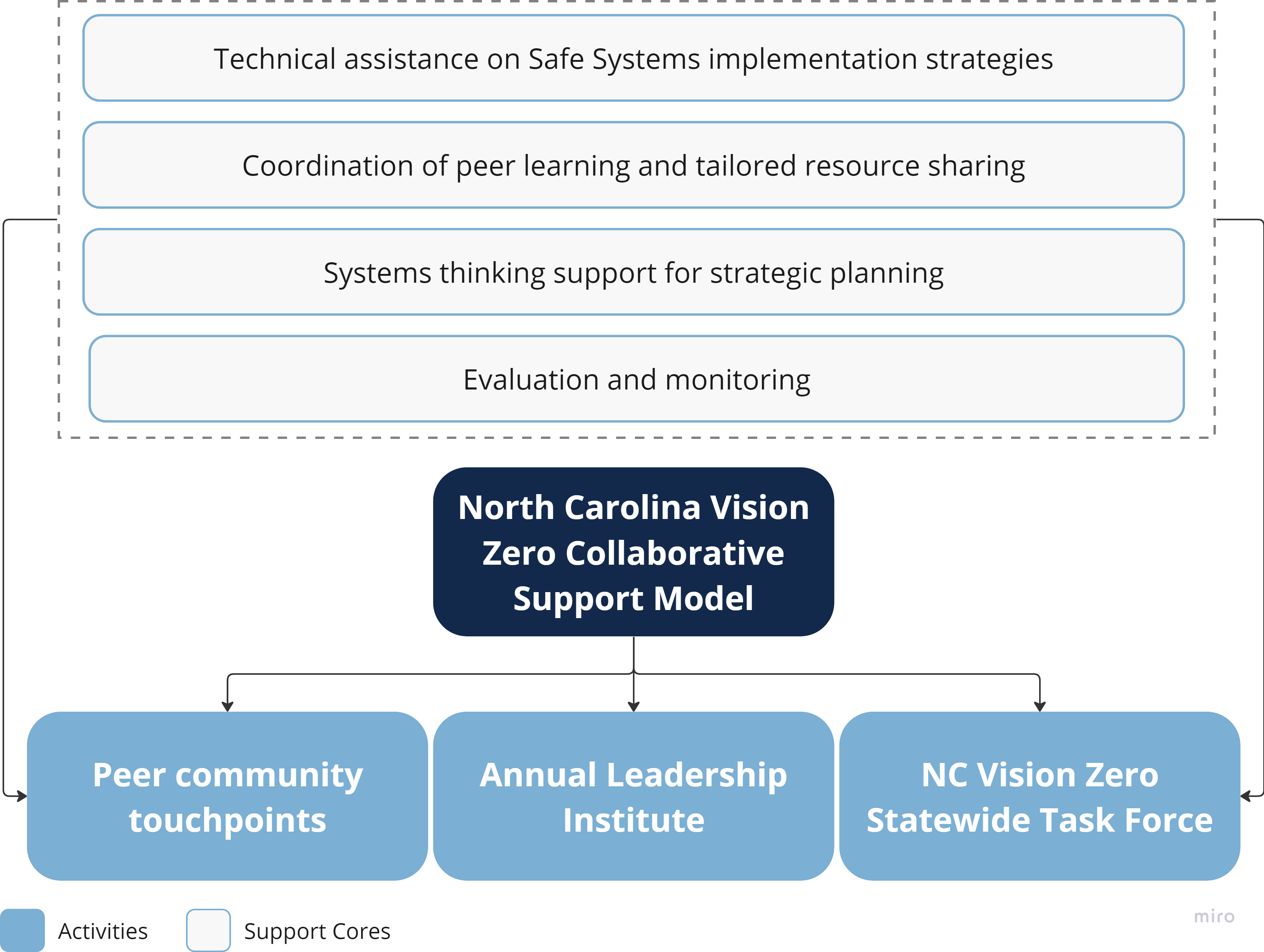Vision Zero in NC
Vision Zero in North Carolina
Vision Zero started in North Carolina in 2015 when Governor McCrory and NCDOT declared NC a Vision Zero state. Since 2015, a growing number of communities across the state have made a commitment to Vision Zero. These communities are working to convene diverse coalitions, each of which looks different and reflects the unique strengths and characteristics of each community. Many have passed formal resolutions committing to Vision Zero as well as adopting formal plans to achieve the goal.
A Collaborative Statewide NC Vision Zero Approach
Since 2020, with support from the NC Governor’s Highway Safety Program, UNC has provided technical assistance to Vision Zero communities across North Carolina to strengthen community capacity to address road violence through effective, multi-sector coalitions. The UNC team represents a diverse collaboration between the UNC Injury Prevention Research Center, UNC Highway Safety Research Center, the Collaborative Sciences Center for Road Safety, UNC Gillings School of Global Public Health, and the NC Institute for Public Health.
The UNC support team provides guidance for NC Vision Zero community efforts, including in the following areas:
Change management Providing guidance on adaptive leadership skills, conflict management, and effective communication to increase the likelihood of successful teamwork.
Implementation of Vision Zero and road safety principles Identifying and sharing out evidence-based Vision Zero strategies, providing resources for drafting Vision Zero action plans, and effective community engagement strategies.
Monitoring and metrics Providing technical assistance on monitoring and evaluating Vision Zero implementation progress.
Systems thinking for systems strengthening Supporting strategic thinking and actions with tools for building strong, diverse coalitions (e.g., the Community Readiness Assessment).
Additionally, in order to provide opportunities for peer sharing and to advance Vision Zero at a statewide level, there are several other regular activities that occur across the state. All NC Vision Zero communities are invited to participate:
Regular peer community touchpoints: The UNC team hosts monthly small group and “all-hands” community meetings for peer learning and sharing, tailored coaching, and coordination.
Annual NC Vision Zero Leadership Institute: Building from the regular touchpoints, this team-based, multi-sector training institute is hosted annually by UNC for Vision Zero community leaders to learn and apply system strengthening tools and training for sustainable Vision Zero planning and implementation.
NC Statewide Vision Zero task force: Convened by UNC and the NC Governor’s Highway Safety Program, this group of diverse stakeholders meets quarterly with the purpose of providing direction and mobilizing resources to help communities in North Carolina working toward achieving Vision Zero in the state.
Taken together, this work which is led by community leaders’ time, efforts, and generosity invested in sharing and helping one another, makes up NC’s Mutual Learning Coalition, Action, and Implementation Support model for Vision Zero. UNC organizes and provides a framework and resources for this model:

With increasing road traffic injury and death rates, particularly among individuals who walk and cycle, there is an urgent need to create a safer and more equitable transportation system in NC and across the US. Vision Zero strategies can help us achieve this goal. In NC, we have observed several successes and tangible movement towards a Safe System for all. However, large scale change will require sustained resources, multi-sector collaboration, and authentic attention to equity. We believe mutual support and collaboration models, such as this model utilized in NC, are critical to supporting and strengthening the life-saving work of community leaders across the state.
Download a summary report of the NC Vision Zero approach here: NC Vision Zero Summary Approach (PDF)